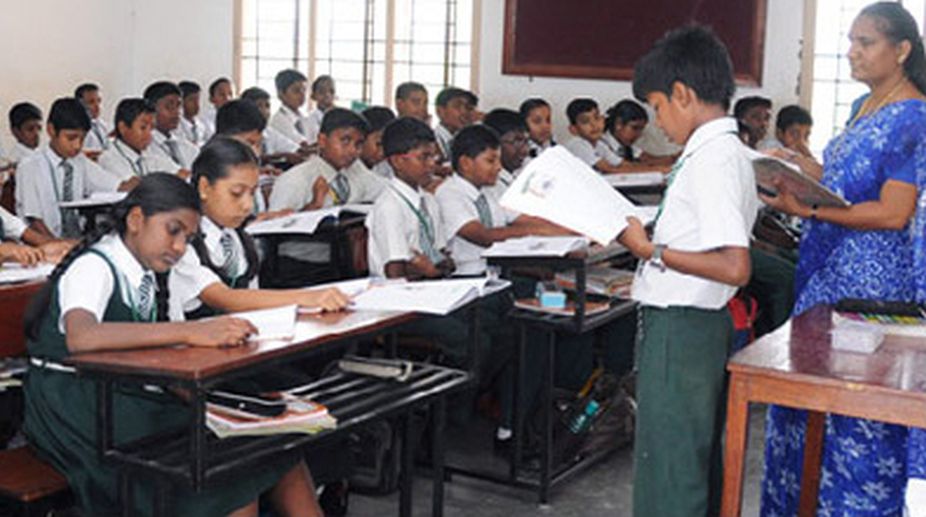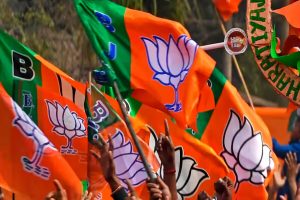Soon after being appointed as the Chief Inspector of Schools in England in 1884, Matthew Arnold, while visiting a school in London told a class-teacher ~ “You must start teaching the children from where they are, not where you wish they were.” The words were uttered by the distinguished educational thinker well over a century ago; the incisive instruction envisions a credible school education system. Perhaps nowhere are these words more relevant than to school education in India, where another national level school attainment survey has thrown up dismal indices of the levels of attainment of school children. A recent school skill attainment report highlights that while enrolment at the national level in the elementary stage is over 95 per cent, continuation to the secondary stage remains poor at 69 per cent, and over half of the learners who enter the secondary stage cannot match the language and numerical skills of a second standard class. Clearly, the challenge has gone beyond the mere enrolment of learners to the transfer of enrolment into learning.
While it is admitted that school education has received a fair share of concern from India’s policy makers in the last three decades, especially since the National Policy of Education was framed in 1986, the delicate balance between the twin challenges of ensuring universal literacy with quality school education has thrown up challenges in terms of policy both at the macro as well as micro level of formulation and execution. Statistics reveal that the twin incentives of providing nutrition and monetary scholarships to the challenged sections of society, including the girl-child, have succeeded to a significant extent in attracting learners to schools. However, the fact that mere retention of learners in schools shall not serve the national education objectives prompted the policy makers to shift focus on quality with the passage of the Right to Free and Compulsory Education Act in 2009. Elaborate stress on providing trained teachers to the classrooms, overhaul of the teacher-education modules at the national level, incentivizing the progress of learners through stages of schooling, have begun to show results but the figures are far from satisfactory.
Advertisement
By the time an average Indian child is prepared to leave the secondary stage, his attainment of skills is poorer by more than five years or classes. This is an alarming figure given that the average Chinese child leaving the secondary stage is poorer by around a year of optimal learning. The fact that India has adopted a free-progress system in schools ensured that irrespective of the level of attainment in a particular grade, school children are promoted to the higher grade, thereby compounding the skill-deficit into a crisis that becomes desperate by the time he is prepared to leave school. Not only does this adversely affect quality schooling, the employability of such learners is jeopardised.
This dismal scenario has often been attributed to the fact that the government spends a dismal 2.7 per cent of its GDP on school education (Brazil, also a developing country, spends 9 per cent). However, statistics on this spending reveal that over 75 per cent of the spending goes towards the salary of teachers and other human resources, leaving precious little for the streamlining of infrastructure. The RTE Act of 2009, which mandated a primary school within a kilometre of every village across the country, has led to an unforeseen crisis with over a third of such primary schools having less than fifty pupils. With 31 crore children attending schools in India ~ according to the 2015 figures ~ the enormity of the crisis is waiting to evolve into a school education calamity unless redressed with urgency.
Linked to this crisis is the fact that the free-progress system followed across the country in elementary schooling in the last decade has been disastrous with the failure of a large section of school children to attain skill-sets of a particular class before being promoted to the next higher grade. The facility of remedial teaching, so eloquently elaborated in the RTE Act of 2009, never received due seriousness with most school teachers taking the easier path of promoting pupils to the next higher grade irrespective of educational attainment instead of taking the mandated recommendation of devoting extra remedial classes for those children with challenged educational attainments. The failure on this score is so serious that we are on the verge of reverting to the conventional ‘pass-fail progress system’ in schools across the country.
The Education for All Global Monitoring Report of 2015, published by UNESCO, while admitting the challenges posed to universal enrolment and retention across developing nations, recommends the setting up of national level skill assessment frameworks which would place the skill development of school children within concrete and measurable parameters. While in the Indian context, such assessment is conducted regularly in the non-governmental sector and organizations, the government’s assessment data is primarily collected by the district inspectorate of schools on the basis of information provided by the schools themselves. In the absence of an objective skill assessment process, such data runs the risk of being inflated and misleading. It is only in 2014 that the country institutionalized the Indian Standard Classification of Education (InSCED) to ‘harmonize different types of education statistics activities to improve national and international comparability’. The result of this skill assessment venture is yet to be discerned at the national level.
A critical factor that dictates quality schooling is trained manpower. While India has been one of the earliest countries to have institutionalized a teacher-education regime nationally, effective outcomes of such training provisions have remained a matter of debate. Linking teacher-education to financial incentives had dictated policy for well over four decades. It was realised that this arrangement was not suitable for a country with the largest number of school children globally. The RTE Act of 2009 mandated compulsory training of all teachers in a time-barred manner with a simultaneous overhaul of the teacher education curricula. However, since the 2009 Act, India has been grappling with a severe crisis in terms of the quality of teacher education, given the mushroom emergence of over 12,000 teacher education institutions without the basic infrastructure and manpower.
The privately managed institutions, most of them set up overnight with little or no control of the National Council of Teacher Education (NCTE), turned into factories to churn out teacher training degrees. The teacher-education system is yet to recover from the crisis. Such training has failed to train teachers in a manner that the school classrooms require, thereby defeating the entire purpose of teacher-education. Despite the overwhelming failure, the ratio of trained teachers to the number of pupils in India, as per 2015 figures, is an abysmal one teacher for around 200 school children. Steps to bring this ratio down in a hurry have resulted in governments both at the Centre and in the states introducing “stop-gap teacher education programmes” which would ensure training degrees without effective skill improvement of the teachers.
The challenges that confront school education are severe. It could snowball to a social crisis, thus undermining the quality of education, social development and economic progress. The compromised standards of our schools are already having an impact… most dramatically evident in the classrooms of our higher education institutions. With little means or the time to address the standards of compromised schooling, teachers of higher education institutions are often forced to bring down the level of instruction in order to ensure universal comprehensibility. This runs counter to the requirements of higher education. With school education serving as the base of the pyramidial structure of India’s education, it is only a matter of time before the entire edifice threatens to crumble unless corrective action is taken to ensure quality schooling.
The writer is Assistant Professor of English, Pritilata, Wadedar Mahavidyalaya, in Nadia, West Bengal.











